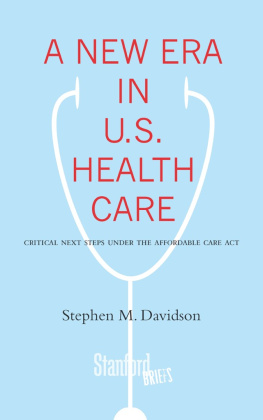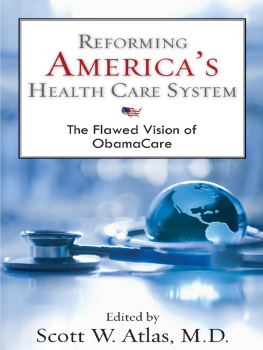While all examples in this book are drawn from real-life experience, some names and other biographical details have been omitted or altered to protect the privacy of those mentioned in the book.
Copyright 2017 by Matthew Hahn
All rights reserved. No part of this book may be reproduced in any manner without the express written consent of the publisher, except in the case of brief excerpts in critical reviews or articles. All inquiries should be addressed to Skyhorse Publishing, 307 West 36th Street, 11th Floor, New York, NY 10018.
Skyhorse Publishing books may be purchased in bulk at special discounts for sales promotion, corporate gifts, fund-raising, or educational purposes. Special editions can also be created to specifications. For details, contact the Special Sales Department, Skyhorse Publishing, 307 West 36th Street, 11th Floor, New York, NY 10018 or .
Skyhorse and Skyhorse Publishing are registered trademarks of Skyhorse Publishing, Inc., a Delaware corporation.
Visit our website at www.skyhorsepublishing.com.
10 9 8 7 6 5 4 3 2 1
Library of Congress Cataloging-in-Publication Data is available on file.
Cover design by Rain Saukas
Cover photograph: iStockphoto
Print ISBN: 978-1-5107-1511-0
Ebook ISBN: 978-1-5107-1513-4
Printed in the United States of America
For Bibi, who is most responsible for everything good in my life, and for Willa, for whom we want to make the world a better place.
For Russell. Our conversations over the years created the content of this book.
For my staff, Lindy, Amber, Tonya, and Mary, who give our patients exquisite care despite all the roadblocks.
And for our patients, and all patients, who all deserve the best care that is possible.
Contents
Introduction
I am a practicing family physician in a small rural town. In 2009, when most of my colleagues were leaving their practices to work for large health systems, I did the opposite, opening a small private practice with one other doctor. We brought along a small, extremely talented, and dedicated staff. My wife is the practice manager. Our practices motto is A new way to practice old-fashioned care.
And thats a good description of our practice. We try to see sick patients on the same day no matter what. We will see patients during the evening, on weekends when need be, and we even do house calls when necessary. We see all ages, and take care of all manner of chronic diseases. We get to know many of our patients like family, and we try to treat them even better.
And we embrace new technologies that revolutionize our ability to get our work done. I am also one of the founders of a small IT company that produced the electronic health record (EHR) software we use in our practice. It enables us to do the work of many with just a few.
We love what we do, and we live for itit is our calling.
But the American health-care system is making it harder and harder to do what we love. And we fear that if things continue as they are now, it may someday soon become impossible.
In every practice I had previously worked, each much larger than mine today, I had been shielded from much of what went on. I couldnt see, and therefore didnt understand, many of the problems that were occurring. But with such a small office now, I get a birds-eye view of everything. And my eyes have been opened. Unfortunately, much of what I see is horrifying.
I am witness to a tragedy. The once great American health-care system has fallen seriously ill. Millions of Americans are suffering the consequences.
Patients are literally dying at the hands of our health-care system. It takes as much of their money as possible first. Then it tries to kill them. Sometimes it actually succeeds. Think Im exaggerating? As I sit writing these very words, I spy this headline from the New York Times : Florida Man Says He Killed Sick Wife Because He Couldnt Afford Her Medicine, Sheriff Says.
That is American health care todaya system so sick that it often harms rather than heals. We have come to accept this, but it is completely unacceptable. And it could be easily fixed.
The symptoms of the illness are well known, and have been for a long time:
Too many patients have limited or no access to medical care. Despite Obamacare, close to thirty million people in America still lack health insurance.
American health care costs too much. According to a September 2015 report by the Kaiser Family Foundation/Health Research and Education Trust, annual premiums for employer-sponsored family health coverage have reached an astounding $17,545. In July 2016, the US Department of Health and Human Services reported that per-person spending on health care in the United States had gone over $10,000, easily more than twice the amount spent in most of the worlds other developed countries.
American health care is poor-outcome health care. A 2014 survey by the Commonwealth Fund reported that the United States health care system is the most expensive in the world (and) among the 11 nations studied in this reportthe U.S. ranks last. And shockingly, a May 2016 article in the British Medical Journal reported that medical errors were the third leading cause of death in the United States.
Yet despite knowing the symptoms, and despite massive efforts to make things right, they are getting progressively worse.
And here is one of the biggest reasons why. More and more, doctors and nurses fight not against disease, but against a rule-crazed administrative system hell-bent on wasting their time and denying patients care. They are being driven away from and even out of patient care, forced to focus instead on compliance with an ever-expanding universe of pointless rules and harmful regulations devised by bureaucrats and administrators who have no idea what they are doing and have little regard for the consequences of their actions.
The practice of medicine, providing care to patients, has been shoved aside, replaced by a sea of distractions. There is less time for patient care, too many diversions during patient care, and no time to focus on improving careonly time to fill out newly required forms, to try to keep up and catch up using unusable computer systems, to learn and negotiate the insane workarounds necessary to obtain care in this system, and to collect more dataalways more datato satisfy the new health-care rule-makers.
While smaller practices like mine find this particularly challenging, we are not the only ones having trouble. The same problems are being experienced throughout the health-care system. My colleagues who have gone to work for larger practices and health systems complain of the same things. Their days, and often their nights as well, are spent struggling to keep up with the added distractions and increasing administrative demands.
A well-publicized study published in the September 6, 2016, issue of the Annals of Internal Medicine concluded, For every hour physicians provide direct clinical face time to patients, nearly 2 additional hours is spent on EHR and desk work within the clinic day. Outside office hours, physicians spend another 1 to 2 hours of personal time each night doing additional computer and other clerical work.
It is a system that is not working for anyone. It is dangerous for patients and incredibly demoralizing for health-care professionals.
But seeing what is going on from my close-up vantage point, one that few physicians (and none of our policymakers or media) today are afforded, has given me a unique view of what is going on. And as I began to see the issues more clearly, I realized that the national conversation regarding health care in the United States was largely missing many of the most crucial pointsthe very issues that make or break our efforts to reform the system. It also became apparent that there is a much better way forward.










